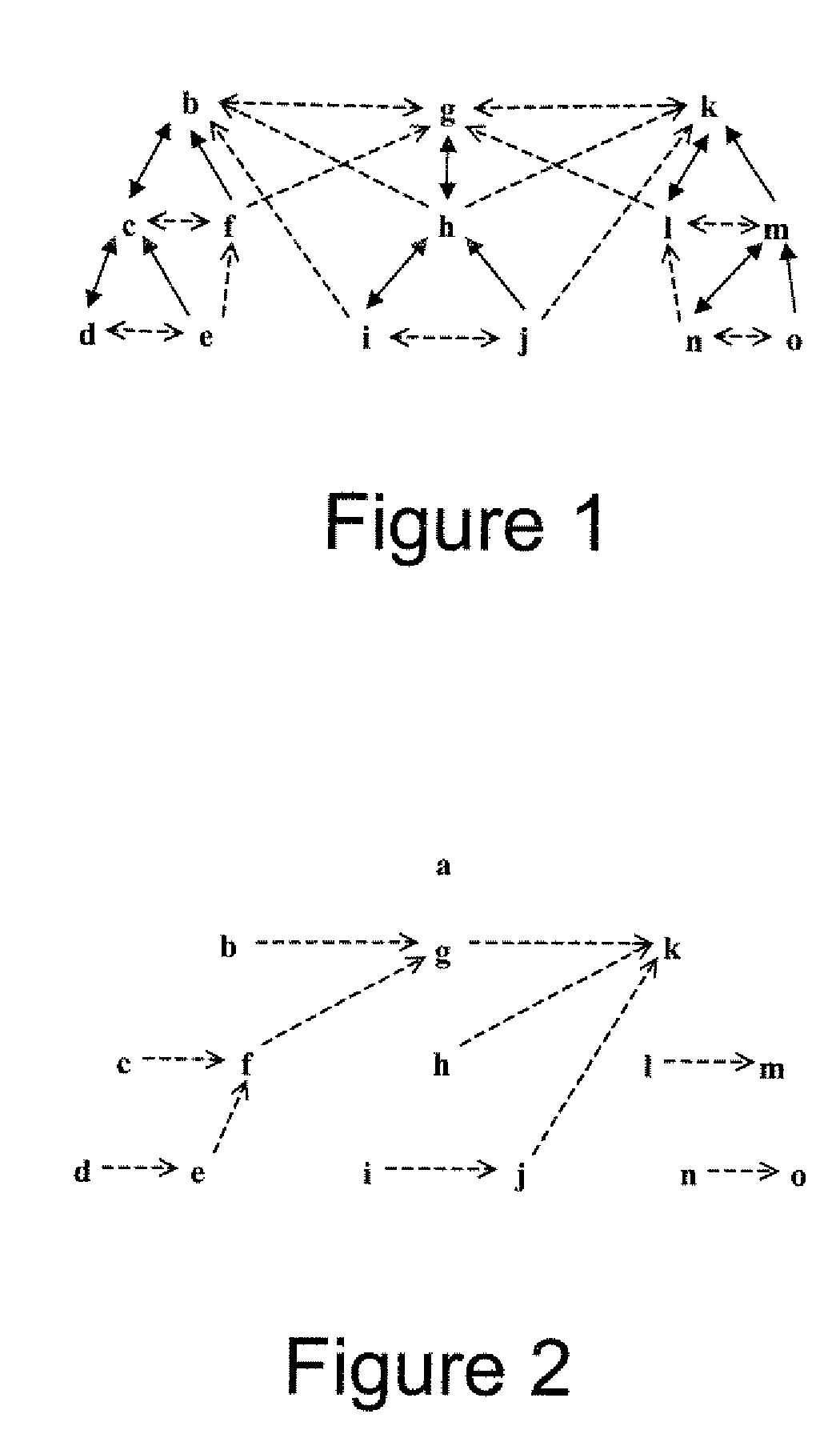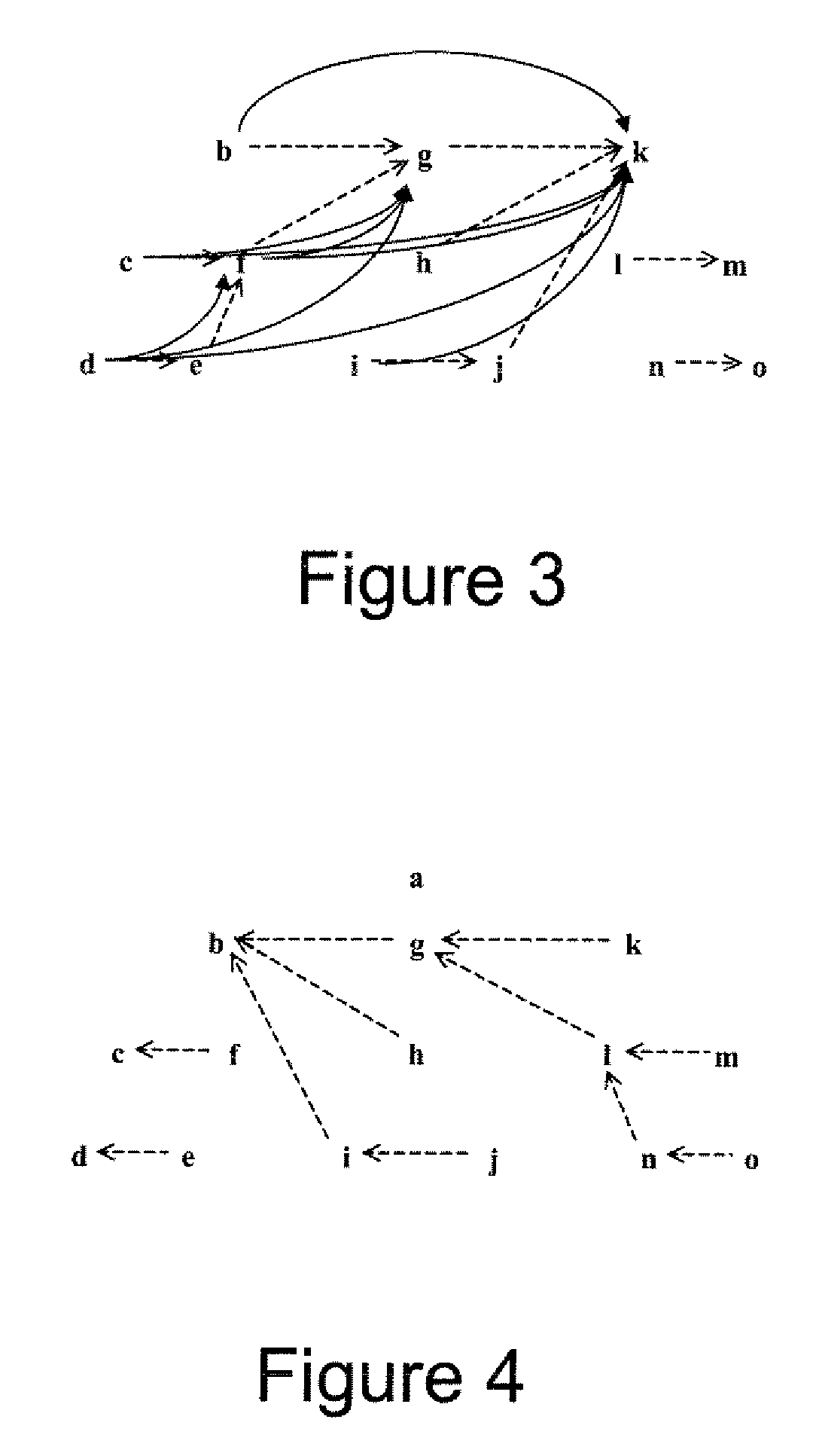Index data structure for a peer-to-peer network
a peer-to-peer network and data structure technology, applied in the field of index data structure, can solve the problem of not always being able to achieve wide-spread agreemen
- Summary
- Abstract
- Description
- Claims
- Application Information
AI Technical Summary
Benefits of technology
Problems solved by technology
Method used
Image
Examples
Embodiment Construction
)
[0028]Reference will now be made in detail to the presently preferred compositions or embodiments and methods of the invention, which constitute the best modes of practicing the invention presently known to the inventors.
[0029]The term “tree” or “tree structure” means a type of data structure in which each element node is attached to one or more element nodes directly beneath it. The connections between element nodes are often called branches.
[0030]The term “tree traversal” means a technique for processing the nodes of a tree in some order. Systematically following the edges of the graph so as to visit the vertices of the graph.
[0031]The term “data object” refers to disparate computing accessible components, examples including but not limited to, an MTree index, a collection of MTree indexes, XML document fragment, collection of XML document fragments, XML document(s), RDF files, music files, movie files, multimedia files, collection of XML documents, a computer system, a collectio...
PUM
 Login to View More
Login to View More Abstract
Description
Claims
Application Information
 Login to View More
Login to View More - R&D
- Intellectual Property
- Life Sciences
- Materials
- Tech Scout
- Unparalleled Data Quality
- Higher Quality Content
- 60% Fewer Hallucinations
Browse by: Latest US Patents, China's latest patents, Technical Efficacy Thesaurus, Application Domain, Technology Topic, Popular Technical Reports.
© 2025 PatSnap. All rights reserved.Legal|Privacy policy|Modern Slavery Act Transparency Statement|Sitemap|About US| Contact US: help@patsnap.com



